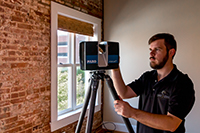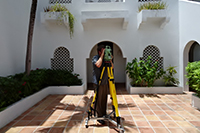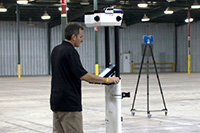PART OF YOUR HEALTHCARE DESIGN & FACILITY TEAM
AEC construction/renovation project development is always complex when the work of multiple design and construction specialists is tightly integrated. That is certainly true in the healthcare industry. From evolving patient care models to advances in medicine, building standards and requirements are continuously changing.
Decisions made in the facility design process can translate directly to a healthcare facility’s functional performance and outcomes. We help Healthcare design teams capture critical existing building information which, provides a foundation for clarifying and prioritizing stakeholder values, design and construction objectives, and constraints to design and construction work.



